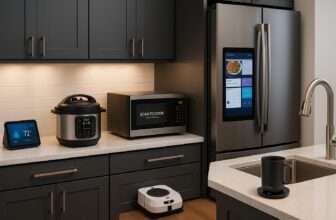

The centerpiece of any impressive PC setup is multiple monitors. Two screens are better than one, right? While dual monitors look cool, you can achieve the same thing without a second display on your desk. It’s time to go ultrawide.
What Is an “Ultrawide” Monitor?
An ultrawide monitor is simply a monitor that’s wider than the traditional 16:9 aspect ratio, such as 21:9. 1920×1080—otherwise known as “1080p”—is a common 16:9 screen resolution. With a 21:9 ultrawide monitor, 1080p resolution becomes 2560×1080. It’s wider, but not taller.
Borderless Multitasking

The most common reason why people use dual monitors is to improve multitasking. You can have an app maximized on one screen and a different app maximized on the second screen. That’s great, but you’re basically locked in to that setup.
An ultrawide monitor essentially lets me choose the size and number of monitors I want. It’s much more flexible than having two separate physical screens. I can have apps in three equally sized windows, two windows in a 70/30 split, four windows in a two-by-two grid, and a dozen other layouts in between.
I could do this with dual monitors too, but there’s one annoying problem: bezels. Even monitors with tiny bezels placed together as close as possible will have physical gaps between them. If I wanted three equally sized windows spanned across dual monitors, I’d have a gap in the middle of one window. This isn’t a problem with an ultrawide, and you don’t need a weird bezel-hider accessory to fix it.
Immersive When You Need It

Splitting the screen up with apps isn’t always necessary, and an ultrawide really shines in those situations too. Did you know that most movies are shot in 21:9 aspect ratio? The same aspect ratio as most ultrawide monitors. This is important.
When you watch a movie on a traditional 16:9 screen, there are black bars on the top and bottom since it’s cramped into a narrower frame. Watching a movie on an ultrawide monitor is much more immersive without the black bars.
Of course, you probably watch movies on your TV more than on your desktop computer, but the same logic applies to other things. Full-screen video games feel more immersive because you have more to see in your peripheral vision.
That immersive effect is also beneficial when trying to focus on a single task. I love being able to maximize Inkscape into full-screen with tons of space for the toolbars and design canvas. Nothing else is distracting me. If I wanted to do that with dual monitors, I’d need to either deal with a bezel in the middle of my workspace, close the windows on the second screen, or turn it off completely, which would leave me with a smaller 16:9 workspace.
Wider Is Cleaner

My preference for an ultrawide monitor isn’t all about practicality. I used dual monitors for several years, and the one thing I never liked about it was the clutter. Double the screens means double the space and double the cords. It always felt a bit messy.
A single ultrawide monitor doesn’t take up as much space. There’s just one stand taking up desktop space, and I only have two cords to worry about. If I decide to switch to a mounting arm, I’ll only need one of them, and there’s only one screen to adjust for viewing angles. I much, much prefer this cleaner setup. Sure, you can get dual monitors to look great—and many people have—but simpler is better for me.
Multitasking Apps

You may have caught on to the fact that flexibility is my favorite thing about having an ultrawide monitor. However, you’ll need some help to take full advantage of that. There are a couple of tips and apps that make the ultrawide experience shine.
The easiest way to multitask with an ultrawide monitor is to take advantage of Windows 11’s much-improved “Snap” feature. By simply hovering your mouse over the minimize or maximize buttons, you can choose a predefined layout for the current window. There will be several options depending on the size of your monitor.
If Snap isn’t powerful enough, you can upgrade to Microsoft PowerToys and the “Fancy Zones” tool. This tool allows you to create your own layouts, and you can quickly snap windows to specific zones with keyboard shortcuts. Fancy Zones is my preferred method, but Windows 11 Snap is also great.

Over on macOS, I use a free app called “Rectangle” for a similar effect as Fancy Zones. macOS has a built-in feature called “Split View,” but it’s not very robust. Rectangle gives you the ability to snap windows to various sizes from the menu bar or with customizable keyboard shortcuts.
One Is Better Than Two
If I’ve convinced you to upgrade to an ultrawide monitor, the next step is to actually pick one. As with traditional 16:9 monitors, you can spend a lot of money on a high-end ultrawide monitor. The big, 4K ultrawide monitors can get up to around $2K, but most people don’t need that.
My personal monitor is the LG Ultrawide 34WK650-W. It’s a modest 34-inch diagonally (14.5″ x 32.5″) and only 1080p. I picked it up for $275, which is a pretty dang good price for a quality ultrawide monitor. LG also makes a smaller 26-inch model that you can snag for less than $150.

LG UltraWide FHD 34-Inch Monitor
A solid, affordable IPS ultrawide monitor with 1080p resolution and HDR 10. It has USB, DisplayPort, and HDMI ports, and a wide range of motion in the arm and stand.
For more advice on ultrawide monitors, check out our Best Ultrawide Monitors guide. We’ve got recommendations for curved screens, 4K, gaming, productivity, and on a budget.














